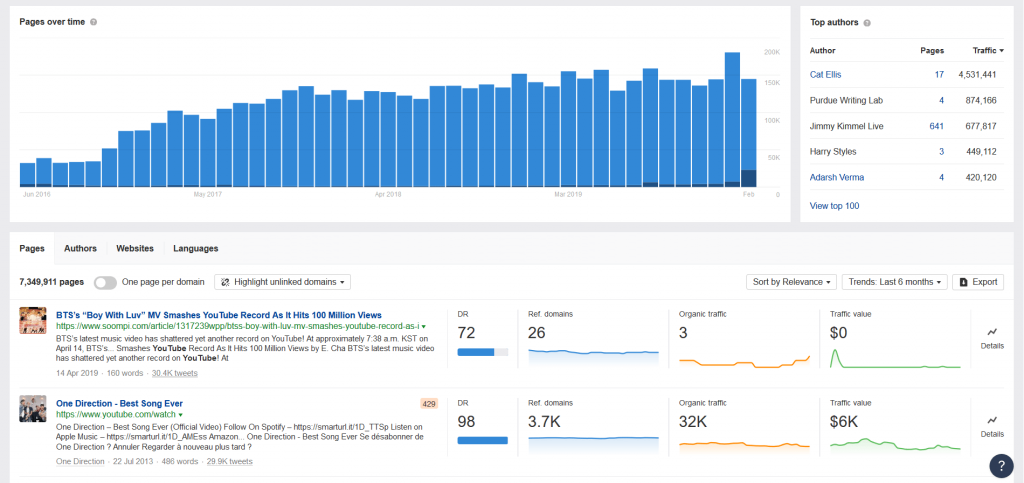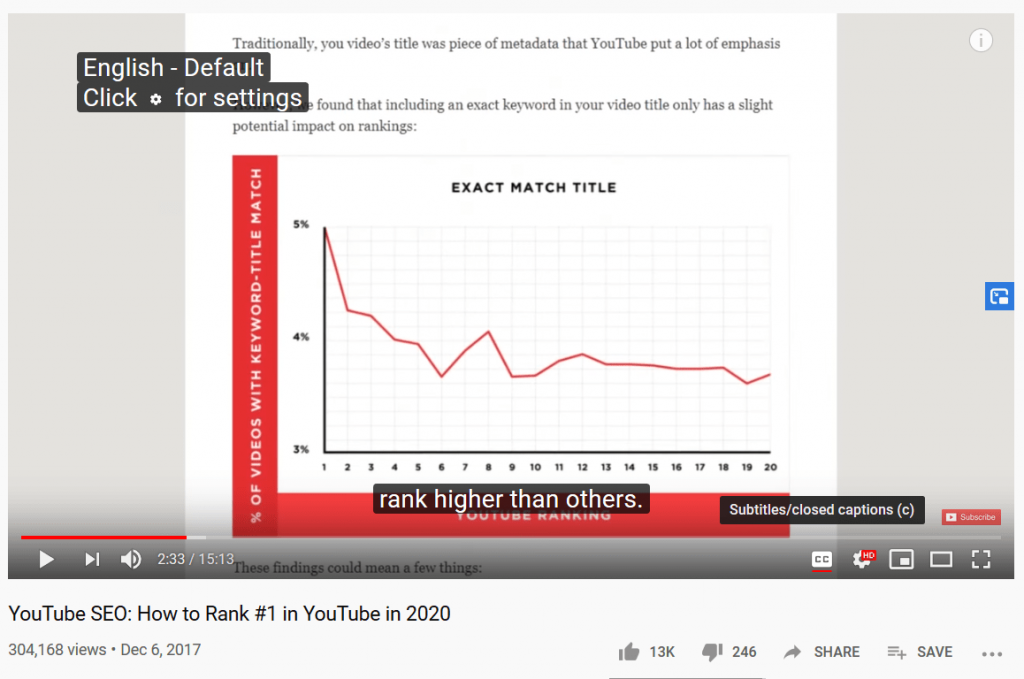YouTube SEO for Google
The Google SERPs are in constant change, challenging SEOs to come up with innovative ways to drive more traffic. Nowadays, half of the SERPs can be dominated by YouTube videos and paid advertisements, organic results being pushed further to the bottom. Google is becoming an ever bigger source of traffic for YouTube videos and that’s why you need to master video SEO this year.
Google is starting to recommend users popular YouTube videos in the SERPs, way before your organic results. This emphasizes the need to have a video presence in 2020 to get traffic. If you’re doing YouTube SEO for the Google algorithm, you can considerably increase your video views.
This article will only cover tactics that will help your video get more views directly from Google, and not the YouTube algorithm. So, here’s our list of tips.
Find traffic-generating topics
There’s a considerable difference between the highest-ranking topics in Google and YouTube. Whilst videos of cats, pranks and other entertaining things can rank high on YouTube, there’s no demand, and therefore search volume for them on Google.
If you want your videos to be ranked in Google, they will need to cover a topic that’s popular in the search engine. If there’s no search volume your video won’t get any traffic regardless if it ranks or not. Moreover, the topic needs to be suitable for the video format – meaning that people would rather watch a clip than read an article.
To find such topics you need to search for videos from your niche that actually generate traffic from Google. You can do this with multiple different tools.
You can use something like Ahrefs to figure out if there’s video intent for your topic. This is one of the fastest and most accurate ways because the tool provides you accurate data concerning the traffic generated through Google for a video. You can use either the Content Explorer or Site Explorer from Ahrefs to find this data. The only disadvantage is that Ahrefs is one of the paid tools.

You can also do a quick search on Google with the line “site:youtube.com [name of your topic]” to see a list of YouTube clips. This will help you figure out the best topic to target.
Optimize your video
Google is never straightforward about the type of content they consider to be of quality and preferable for ranking. However, there are a few things you should keep in mind when creating your YouTube video.
Whenever creating a clip, you need to keep the end-user in mind and try to provide as much value as possible. Use language that’s descriptive and easy to understand. Stay away from unnecessary rants and try avoiding the use of complex and misleading words.
Your clip needs to be to the point, explaining everything in as little time as possible. If you end up explaining too many unnecessary things don’t hesitate to go back to the drawing board and rethink the flow of the clip. You don’t want to confuse your listener and the Google algorithm. Moreover, your clip needs to have good audio or else the algorithm might not be able to decipher it.
When uploading your clip, you should also make sure to technically optimize it with the best practices in mind. A clip that’s optimized for the YouTube algorithm will also have an impact on Google. If you’re analyzing the rankings a bit, you’ll quickly notice that the same clips that are dominating the YouTube ranks are also showcased in Google.
Add accurate captions
Whenever you upload a video, YouTube will include closed captions automatically. Depending on the quality of the video, the accent of the speaker and countless other factors, these captions may or may not be accurate. If you ever tried them, I’m sure that you managed to notice quite a couple of grammar and misspelling mistakes, at the least.
If you’re uploading a clip, the algorithms won’t be able to analyze most of the information that you’re providing. Algorithms are best at analyzing text but your title, description and the tags you’re using are not providing enough info. However, captions are basically a transcript of your clip that search engines can analyze far easier.

If you’re not using accurate CCs, you’re missing on a lot of potential reaches since your clip will likely be hidden from the search engines. CCs are also great for increasing the watch time of your clips, this being a positive signal on its own.
Besides the fact that Google will understand your clip easier if you’re providing captions, certain groups of users will also benefit from it. People working in loud environments and those suffering from hearing loss rely on captions alone to understand your clip.
The thumbnail still matters
If you’re familiar with article SEO, you probably know that the thumbnail / featured image of your article is not as important in rankings. However, when it comes to video, the thumbnail is one of the most important attention-grabbing elements.
Videos that have great thumbnails tend to rank far higher and get more clicks both on YouTube but also on Google. Whenever uploading a clip, YouTube will provide you with three different stills to use as the thumbnail. Avoid them and instead create a custom image for this purpose.
However, a great thumbnail needs to follow a few guidelines. The format is very important, try to stick to 16:9 ratio since that’s the one used on Google. Not using this format will make your thumbnail look weird. You also need to use a suggestive image that directly relates to the title of your clip and the problem you’re trying to solve.
Colors are also very important. Try to avoid using white and gray as the background of your thumbnail since they will fade in with the SERPs. However, go for darker and more punching colors like orange, red and dark blue. Also, don’t hesitate to use descriptive text that further explains your clip in the thumbnail.
Conclusion
YouTube SEO for Google is becoming an ever more important tactic in today’s digital world. The Google algorithm is constantly changing based on people’s needs, and right now video content is the place to be. If you want to take advantage of the free Google traffic for your clips, make sure to focus on the production quality of your video and try to help the search engine understand your clip’s topic in any way possible.